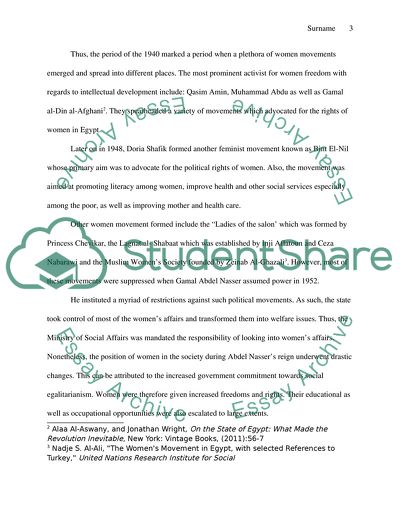Cite this document
(The Struggle for Freedom Suffered By the Women of Egypt Essay Example | Topics and Well Written Essays - 1500 words, n.d.)
The Struggle for Freedom Suffered By the Women of Egypt Essay Example | Topics and Well Written Essays - 1500 words. https://studentshare.org/history/1771595-the-struggle-for-freedom-suffered-by-the-women-of-egypt
The Struggle for Freedom Suffered By the Women of Egypt Essay Example | Topics and Well Written Essays - 1500 words. https://studentshare.org/history/1771595-the-struggle-for-freedom-suffered-by-the-women-of-egypt
(The Struggle for Freedom Suffered By the Women of Egypt Essay Example | Topics and Well Written Essays - 1500 Words)
The Struggle for Freedom Suffered By the Women of Egypt Essay Example | Topics and Well Written Essays - 1500 Words. https://studentshare.org/history/1771595-the-struggle-for-freedom-suffered-by-the-women-of-egypt.
The Struggle for Freedom Suffered By the Women of Egypt Essay Example | Topics and Well Written Essays - 1500 Words. https://studentshare.org/history/1771595-the-struggle-for-freedom-suffered-by-the-women-of-egypt.
“The Struggle for Freedom Suffered By the Women of Egypt Essay Example | Topics and Well Written Essays - 1500 Words”. https://studentshare.org/history/1771595-the-struggle-for-freedom-suffered-by-the-women-of-egypt.


